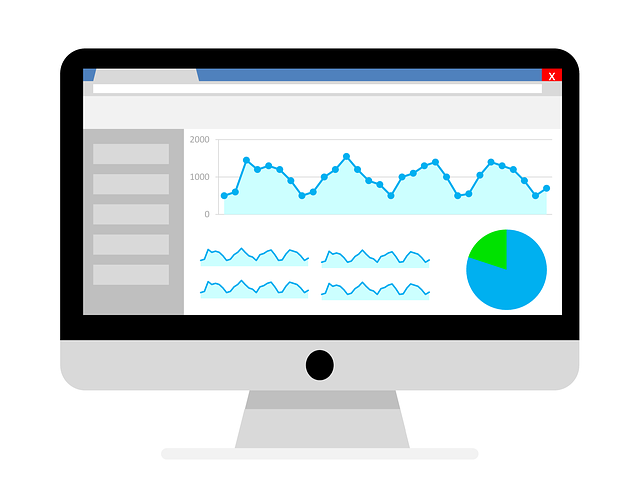You cannot buy your way to the top of the search engine results page. People have tried before. It doesn’t work.
(more…)Category: SEO

3 Things You Should Understand About Local SEO
A recent infographic published by web design specialist Go Gulf revealed some very telling statistics concerning local search engine optimization. Per the agency’s collected research, 86 percent of consumers rely on the Internet to find local businesses, with 29 percent of them searching at least once a week. Seventy-eight percent of these searches – which comprise 46 percent of all search traffic on Google – result in an in-store purchase.
(more…)
Dealing With Negative Search Results About Your Brand
Sometimes truth really is stranger than fiction. Per an article in Wired Magazine, UK Prime Minister Boris Johnson has recently been engaging in a bit of downright bizarre public behavior. This includes referring to himself as the model of restraint in light of allegations he’s using violent language regarding Brexit, brandishing a herring (also known as a kipper) when discussing the nation’s fishing industry, and saying he likes to paint old wine boxes into buses.
(more…)
Three Things to Understand About Voice Search and SEO
Voice search is more popular than ever. As digital assistants like Amazon Alexa and Google Home appear in houses all around the world, consumers are increasingly using these tools to search the web. Don’t just take our word for it – we’ve come armed with statistics.
(more…)
The Inextricable Link Between UX and SEO
“Focus on the user and all else will follow.”
That’s one of the first lines in Google’s guiding philosophy, titled Ten things we know to be true. The company has, since its inception, focused on providing its audience with the best user experience possible – a fact which is reflected in all its products, from Android to Google Home to the Google search engine. It’s also what Google demands of other website owners.
(more…)
YouTube Search Engine Optimization: A Beginner’s Guide
As one of the web’s most popular multimedia platforms, YouTube reaches more American consumers in an average week than every cable network combined. It draws in around 2 billion unique users each month, who together watch more than two hundred and fifty million hours of video a day.
(more…)
Why SEO Cannot Produce Guaranteed Results
Experts always say you’re doing search engine optimization (SEO) all wrong.
(more…)
Why Key Phrases, not Keywords, Are Important in SEO
Keywords are on the way out.
No, I’m not saying search engine optimization (SEO) is no longer relevant. As long as search engines exist, SEO must remain a fixture in your brand’s digital marketing strategy. What I am saying is that the relevance of single-word search terms is fading fast.
(more…)
How to Understand What Brings People to Your Website
Keyword research is only the first step in search engine optimization. It’s an important foundation, don’t get me wrong. At the same time, just as no site metric exists in a vacuum, keywords lose a lot of value if you understand nothing about the people typing them.
In short, you know what searches bring people to your site, but do you know why?
Let’s say someone types in the search term ‘Tonka.’ Are they looking to buy a toy truck? To read about the Tonka brand? To research the 1958 Disney movie? To learn more about rocket fuel?
Without further information, you simply cannot know. But you need to. Understanding search intent is critical to optimizing your site, and crucial if you want to provide your audience with the best experience possible.
Let’s start with an overview of the different types of search intent.
Learn, Locate, Purchase, Research: 4 Types of Search Intent
According to SEO firm Yoast, all searches fall into one of the following categories.
- Informational queries are entered by users who are looking for information of some kind. This could include information on the weather, current events, marketing tutorials, and so on. These users have a specific question and are looking for a specific answer.
- Navigational queries are entered by users who are looking for a specific website. It’s usually not worthwhile trying to rank high on a navigational query – it either happens organically, or your site isn’t what people are looking for.
- Transactional queries are entered with the intent to purchase in the immediate future. They usually include keywords like “buy” or “purchase.”
- Commercial/Investigative queries sort of blend transactional and informational. These are people who plan to purchase in the near future but want to learn more before they do. They’re looking for reviews, for advice on which product is the best, etc.
Why People Search: Understanding User Intent on Your Website
Now that you know the different types of search intent, the next order of business is figuring out which of them drives traffic to your website. The good news is that you likely already have all the data you need for this. All you really need to do is read between the lines.
First, consider the type of page that’s receiving search traffic. A product listing is probably going to draw in users with either transactional or investigative intent. A blog post or white paper on the other hand will draw in users who’ve entered informational queries.
It may also be worthwhile to examine the search engine results page. What ads are displayed on the Search Engine Results Page (SERP)? What is the nature of the other sites that have ranked? Take a bit of time to study, and try to put yourself in the shoes of someone who’s entered the keyword or keyphrase, and ask yourself: what are they looking for, and how do the results meet that need?
That is, after all, what nearly every Google algorithm update to date has been about – establishing a better understanding of user intent, and better meeting user needs.
Per SEMRush, you should also pay particularly close attention to the following search features:
- Informational: Live results, knowledge cards, tweets, top stories, featured snippets, videos
- Commercial: People also ask, shopping, reviews, videos, knowledge panel, featured snippet lists
- Transactional: Paid product panels, paid knowledge panel additions, shopping, knowledge panels, reviews, images
Finally, take a look at how people are engaging with your content. An abnormally high bounce rate could indicate that your content doesn’t quite mesh with what people are looking for. Again, though, don’t measure bounce rate in isolation.
A thought leadership post, for example, might have a high bounce rate coupled with high time on the page. Sure, you ideally want people to respond to your call to action. But many of them will probably read the piece, find that it fits their needs, and move on.
(more…)
How to Prevent Your Site From Having a Negative Bounce Rate
After a quick Google search, a user visits one of the first websites the search engine suggests. After spending only a few minutes on the website’s landing page, they close their browser tab and navigate elsewhere. This is what’s known, in search terms, as a bounce.
(more…)

